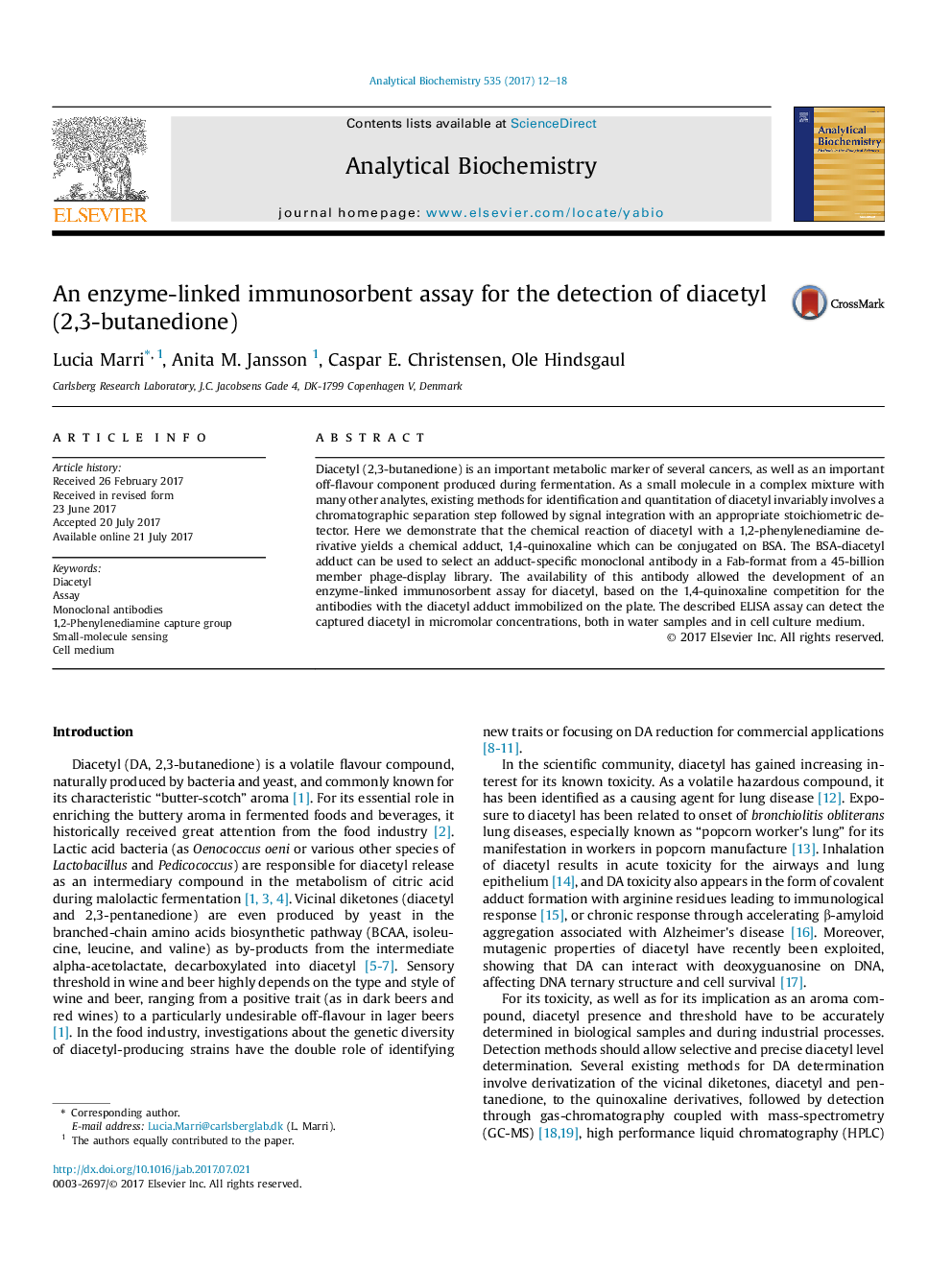| Article ID | Journal | Published Year | Pages | File Type |
|---|---|---|---|---|
| 5131482 | Analytical Biochemistry | 2017 | 7 Pages |
Diacetyl (2,3-butanedione) is an important metabolic marker of several cancers, as well as an important off-flavour component produced during fermentation. As a small molecule in a complex mixture with many other analytes, existing methods for identification and quantitation of diacetyl invariably involves a chromatographic separation step followed by signal integration with an appropriate stoichiometric detector. Here we demonstrate that the chemical reaction of diacetyl with a 1,2-phenylenediamine derivative yields a chemical adduct, 1,4-quinoxaline which can be conjugated on BSA. The BSA-diacetyl adduct can be used to select an adduct-specific monoclonal antibody in a Fab-format from a 45-billion member phage-display library. The availability of this antibody allowed the development of an enzyme-linked immunosorbent assay for diacetyl, based on the 1,4-quinoxaline competition for the antibodies with the diacetyl adduct immobilized on the plate. The described ELISA assay can detect the captured diacetyl in micromolar concentrations, both in water samples and in cell culture medium.
